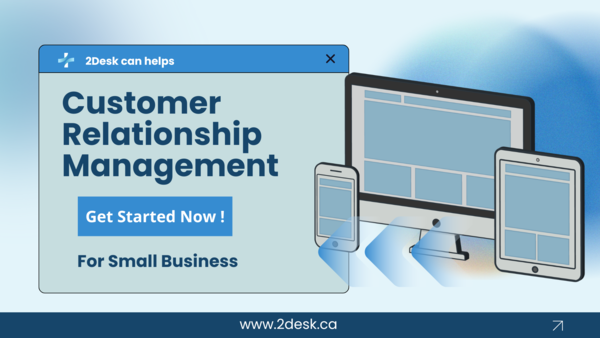Your office is more than just a place with a desk and a chair; it's the command center for your professional life. Yet, for many, it's a source of constant frustration—a landscape of distractions, discomfort, and disorganization. We often blame our lack of focus on willpower alone, forgetting that our physical environment plays a monumental role in our ability to perform deep, meaningful work.
A workspace that works against you can drain your energy, stifle your creativity, and sabotage your best intentions. The good news? You have the power to change it. By making intentional adjustments, you can engineer an office environment that is truly conducive to work, one that supports your focus, enhances your comfort, and even boosts your mood. Let's dive into the blueprint for building your ultimate productive workspace.
Declutter and Organize: The Foundation of Focus
A cluttered desk is a cluttered mind. Every out-of-place paper, tangled cord, and random piece of stationery is a small visual distraction that pulls at your attention. Creating a clean and organized space is the first and most crucial step in minimizing this "visual noise" and creating a serene environment for concentration.
The goal isn't sterile minimalism (unless that's your style!), but rather a system where everything has a designated home. This reduces decision fatigue and the time wasted searching for what you need.
Actionable Steps for Organization:
- Embrace the "One-Touch" Rule: When you pick something up, decide its fate immediately. File it, use it, or throw it away. Don't just move it to another pile.
- Go Vertical: Use wall shelves, monitor stands with storage, and vertical file holders to reclaim valuable desk real estate.
- Tame the Cable Monster: Nothing creates visual chaos like a nest of tangled wires. Use cable ties, clips, or a cable management box to neatly route and hide all your cords.
- Digitize What You Can: Scan important documents and save them to a well-organized cloud or local folder system. This drastically reduces paper clutter. A tool like Evernote or Notion can be invaluable.
- Implement a 5-Minute Tidy: At the end of each workday, take five minutes to clear your desk. Put things back in their place, wipe down the surface, and prepare your space for a fresh start the next morning. This small habit has a massive long-term impact.
Optimize Your Ergonomics for Comfort and Health
You can't do your best work if you're in pain. Poor ergonomics don't just cause nagging aches; they are a major source of distraction and can lead to serious long-term health issues like repetitive strain injury (RSI) and chronic back pain. A comfortable, supportive setup is a non-negotiable part of a productive office.
Follow these steps to create an ergonomic workstation that supports your body, not strains it.
- The Chair is Your Throne: Adjust your chair so your feet are flat on the floor and your knees are at a roughly 90-degree angle. Your lower back should be supported by the lumbar cushion. Armrests should be positioned so your shoulders are relaxed and your elbows are at a 90-degree angle.
- Monitor at Eye Level: The top of your computer monitor should be at or slightly below your eye level. You shouldn't have to tilt your head up or down to see the screen. If you're using a laptop, an external monitor or a laptop stand is essential.
- Keyboard and Mouse Placement: Position your keyboard and mouse close enough that you can use them with your elbows by your side and your wrists in a straight, neutral position. An ergonomic keyboard or mouse can provide additional comfort.
- Remember to Move: Even the perfect setup can't beat the need for movement. Follow the 20-20-20 rule: every 20 minutes, look at something 20 feet away for at least 20 seconds to reduce eye strain. Get up, stretch, and walk around for a few minutes every hour.
Master Your Environment: Light, Sound, and Air
Your senses are constantly processing your surroundings. By controlling the key environmental factors of light, sound, and air, you can create a space that feels energizing and focused rather than draining and distracting.
Let There Be Light
Poor lighting can cause eye strain, headaches, and drowsiness.
- Prioritize Natural Light: If possible, position your desk near a window. Natural daylight is proven to improve mood and alertness.
- Layer Your Lighting: Don't rely on a single harsh overhead light. Use a combination of ambient (general room light), task (a good desk lamp for focused work), and accent lighting.
- Choose the Right Bulb: Opt for LED bulbs with a "daylight" or "cool white" temperature (around 5000K-6500K) for your task lamp to promote alertness and focus.
Control the Soundscape
Noise is one of the biggest productivity killers, especially in open-plan offices or a busy home.
- Invest in Noise-Canceling Headphones: This is the single most effective tool for blocking out distracting conversations, background noise, and interruptions.
- Use Ambient Sound: If silence is deafening, use a white noise machine or an app (like myNoise or A Soft Murmur) to play calming sounds like rain, a fan, or a coffee shop buzz. This can mask more jarring, unpredictable noises.
- Set Boundaries: In a shared space, communicate your need for focused time. A simple sign or letting colleagues know you're in "deep work" mode can be very effective.
Breathe Easy
Stale, stuffy air can lead to fatigue and a foggy brain. Improving air quality is a simple way to feel more alert.
- Introduce Plants: Biophilic design—the concept of incorporating nature into our environment—is powerful. Plants like the Snake Plant, Spider Plant, and Peace Lily are low-maintenance and excellent at naturally purifying the air.
- Ventilate: When possible, open a window for a few minutes each day to let fresh air circulate.
- Consider an Air Purifier: A small air purifier can help remove dust, allergens, and other pollutants, creating a cleaner breathing environment.
Creating an office conducive to work is an investment in yourself and your career. It's not about achieving a picture-perfect space overnight. It's an ongoing process of tweaking and refining. Start with one area—declutter your desk this afternoon or adjust your monitor height right now. You'll be amazed at how these small, intentional changes can combine to create a workspace where you don't just get things done, but where you can truly thrive.

